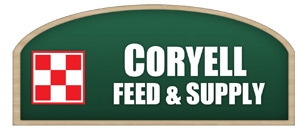{article.name}
The Impact of Forage Quantity and Quality on Beef Nutrition

- Share this:
- Share on Facebook
- Pin on Pinterest
- Tweet on Twitter
Management of beef cattle nutrition ideally should be based on the quantity and quality of forage, as well as animal considerations such as body condition score, physiological status and production goals, according to information from the Texas AgriLife Extension Service (formerly Texas Agricultural Extension Service).*
Estimating the quality of forage consumed by grazing animals often is difficult because the quality of forage changes seasonally, according to beef cattle specialists. Also, in rangeland environments, animals can choose from numerous plant species and select specific plant parts. This selectivity frequently changes the diet composition and makes it difficult to tell exactly what these animals are eating.
For some time, it has been recognized that a relationship exists between forage quality and the physical appearance of feces of grazing cattle.
Grazing cattle primarily eat grasses and forbs (herbaceous broadleaf plants) and prefer new plant growth. New plant growth consisting of mostly leaves contains high levels of easily digestible compounds.
This new plant growth has very little fiber in the form of cellulose or cellulose-lignin complexes. Therefore, cattle droppings that result from the consumption of immature, high quality forages tend to fall to the ground in relatively shapeless deposits. As grasses mature, the fibrous content increases and the appearance of the cattle droppings reflects a lower quality diet that is high in fiber.
To help interpret the relationship between forage quality and fecal appearance, please see adjacent photos.
Forage quality categories are divided on a crude protein basis because this approach provides the clearest relationship to visual changes in droppings. Some overlap of digestibility values exists between the middle two crude protein levels. Forage quality estimates were obtained using near infrared reflectance spectroscopy (NIRS) fecal analysis. While this guide serves as a general indicator of forage diet quality, more precise estimates can be obtained through NIRS fecal analysis.
Interpreting forage quality
Forage quality must be interpreted in relation to the status of the animals being managed. Be sure to consider these factors:
- Animal physiological status (dry, lactating, growing).
- Body condition score for determining performance goals. Body condition scores are good nutritional management indicators. These scores reflect past forage quality and quantity levels, but they also indicate future management needs.
- Production goals (maintenance versus gain).
Don’t overlook forage quantity
While forage quality is important, so is forage availability or quantity. Beef cattle experts say there are several indicators that may provide clues to forage availability. These include:
- Forage preferences. Even though grass is their preferred food, some grasses are more palatable and cattle will search for these specific grasses. Having “a lot of grass” does not necessarily mean cattle will perform at the desired level if very little of the desired grass is available, according to experts.
- Eating of browse. Texas AgriLife Extension experts explain that cattle diets typically consist of more than 80 percent grass and other herbaceous plants. Cattle are not efficient at eating the leaves of wood plants, also known as browse. Normal diets usually contain less than 7 percent browse. If cattle are spending time eating browse, it is a good indicator that available forage is limited. Performance most likely will suffer once browse in the diet reaches 10 percent.
- Grazing patterns. Cattle have fairly definite grazing patterns. Typically, there are three major daily grazing periods–long periods at dawn and late afternoon and a short one near midnight. Cattle graze to fill a need for quantity. If you see your cattle grazing in the mid-day summer heat, this might be an indicator that they do not have enough grass to meet their needs.
Help with nutrition management
Purina Mills has designed supplemental feed products to help you manage your beef cattle nutrition programs. These products can improve animal performance while also enhancing forage utilization. They help you balance the nutritional needs of your cattle when forage quality and quantity decline as the spring and summer progress.
Three range supplements, for example, contain Purina’s exclusive Intake Modifying Technology™. These are: Sup-R-Block®, Sup-R-Lix®, and Accuration® Cattle Limiter.
Purina Mills IM Technology supplements are offered free-choice, not hand-fed. IM Technology products are consumed by cattle multiple times a day. This optimizes the rumen’s environment so you’re offering cattle predictable, consistent nutrition all the time.
Other benefits of these products include:
- Cattle graze longer because they do not need to cease grazing as they would if they were hand-fed.
- An increase in grazing distribution. Cattle can be drawn into less heavily grazed areas through free-choice blocks and feeders.
- A decrease in labor and delivery costs.
Visit with your Purina Mills representative, who can help you determine which IM Technology product best fits your production system and goals.
Special Offers
We are constantly adding new specials to our site. Be sure to check back often!


Comments